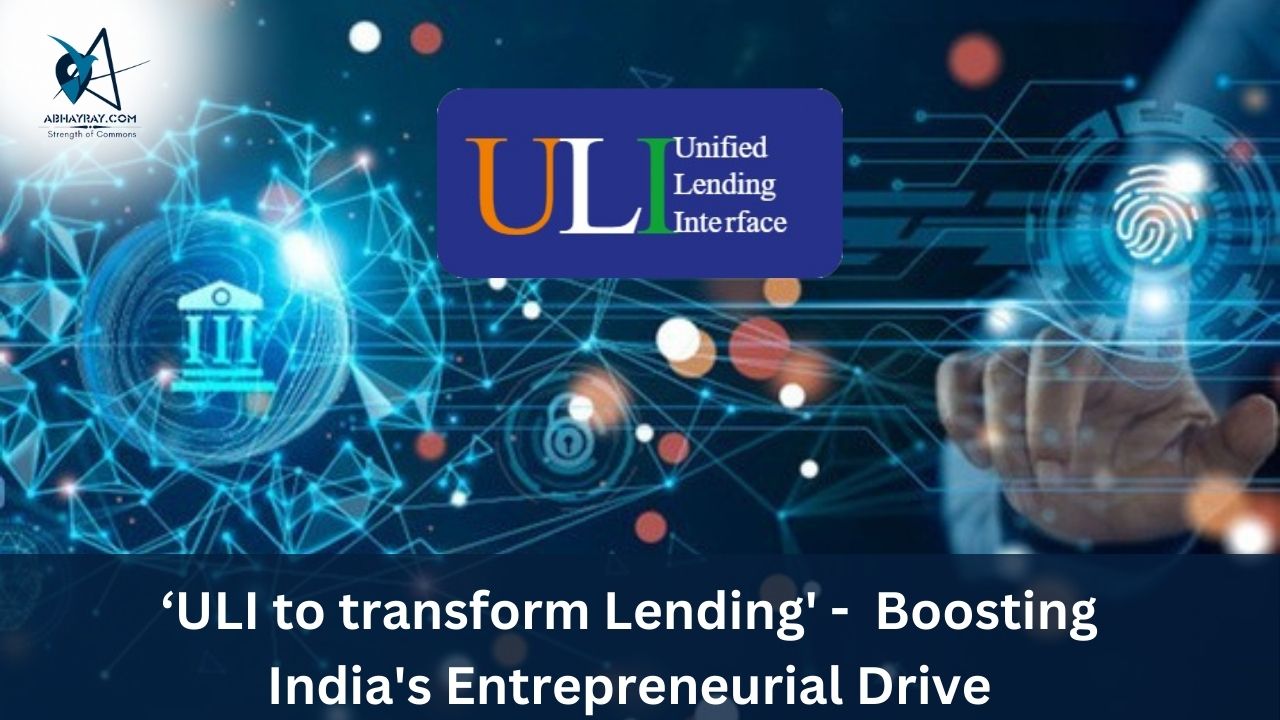Introduction
The RBI introduced ULI (Unified Lending Interface) in August 2024 as a frictionless credit platform aimed at empowering smaller and rural borrowers. Then RBI Governor Shaktikanta Das described it as part of India’s “new trinity” of JAM-UPI-ULI, positioning it alongside digital tools like the Unified Payments Interface (UPI) as a pillar of the nation’s digital infrastructure.
Nikhil Kamath Views
Nikhil Kamath, co-founder of Zerodha, has praised the Reserve Bank of India’s Unified Lending Interface (ULI) as a transformative step for India’s economic aspirations. “Access to credit for everyone is cardinal to India’s growth aspirations,” Kamath said, adding that ULI could significantly fuel the entrepreneurial drive across the country.
He shared his thoughts on the Unified Lending Interface (ULI) and its potential to fuel individual growth. Kamath praised ULI as a significant step forward in supporting India’s entrepreneurial spirit, even suggesting it could drive greater change than the Unified Payments Interface (UPI).He emphasised that access to credit is essential for India’s growth, noting that a strong indicator of a regulation’s effectiveness is whether it reduces shadow markets—a sign that it could be beneficial across industries.
What is ULI (Unified Lending Interface) ?
It is a system that connects banks, NBFCs, fintech companies, and microfinance institutions to ensure easy, transparent and inclusive access to credit for everyone regardless of their background or financial status.When people can’t access formal loans from banks, they often turn to loan sharks who offer quick loans but at higher interest rates.This traps many people in a vicious cycle of debt.Besides, there is a trend of fake loan apps which promise easy loans with minimal paperwork but hidden charges which has further exacerbated the situation. And this is where ULI steps in, simplifying the entire lending process by offering a single platform where borrowers can apply for loans from multiple lenders.
He drew an analogy of Zomato and Swiggy to say that ULI is their lending equivalent. Just as these apps allow you to compare restaurants and prices, ULI allows you to compare loan offers, promoting transparency and fostering healthy competition, he wrote further.Whether it is personal loans, business financing or micro loans, ULI simplifies the process of finding the best option, just as ordering your meal.
ULI’s Key Features
- Alternative credit scoring : ULI uses data from GST records, bank transactions, mobile payments and utility bills to access creditworthiness by passing the need for traditional credit scores.
- Real time approvals : It ensures instant approvals for a range of purposes — be it medical needs, business opportunities or seasonal requirements.
- Providing micro loans : ULI will enable lending for as small as ₹10,000.
- Customised loan products : With advanced AI and data analytics, ULI tailors financial situations for diverse needs offering personalised loans rather than one size fits all model.
Working of ULI Platform
The ULI platform, built on standardized APIs for a ‘plug and play’ model, allows lenders to access borrower data seamlessly, including land records and financial history. By eliminating the need for extensive documentation and reducing credit appraisal times, ULI is expected to meet the significant unmet demand for credit, especially among agricultural and MSME borrowers.
Das, at the RBI@90 Global Conference, compared ULI’s potential to the transformative impact of UPI on digital payments. “Just like UPI transformed the payments ecosystem, we expect that ULI will play a similar role in transforming the lending space in India,” he said. ULI aims to cut through bureaucratic red tape, ensuring quicker turnaround times and improved credit delivery for underserved communities. “ULI is a great step towards helping the entrepreneurial drive of India,” Kamath stated.
How Can ULI Support Change?
Kamath claimed that ULI will challenge the traditionally cautious approach of Indians towards borrowing. While the safer side approach might have worked in the past, the changing societal; landscape required a more nuanced, modern lending system, he argued. He highlighted various challenges within the current lending ecosystem, including complex credit systems, high lending rates, informal lenders, regional disparities and socio-cultural barriers. The Reserve Bank of India (RBI) had introduced ULI a system prepared to streamline and standardise lending.
Benefits for Different Stakeholders
- Customers
- Access to a wide range of credit products tailored to their needs.
- Reduced friction in the lending process, making it faster and more transparent.
- Increased financial inclusion, particularly for rural and underserved segments.
- Lenders
- Streamlined access to comprehensive customer data, enabling more precise credit decisions.
- Lower customer acquisition costs due to the broad reach of the platform.
- Enhanced ability to validate and verify customer information, reducing fraud risks.
- Fintechs
- Opportunity to innovate and create new solutions by leveraging Unified Lending Interface standardized data and APIs.
- Ability to provide deeper customer insights and improve customer experiences.
Conclusion
The Unified Lending Interface (ULI) represents a significant advancement in the Indian lending landscape, potentially reshaping how credit is accessed and disbursed. For large lending companies, ULI offers an opportunity to streamline customer onboarding, enhance risk management, reduce costs, and tap into new markets. By embracing ULI, these companies can position themselves as leaders in the evolving digital lending ecosystem, driving greater financial inclusion and innovation.
GMICapitals.com RaysVeda.com GetMyStartup.com LawCanal.com GetMyIndia.com ZinCob.com Angeltors.com

